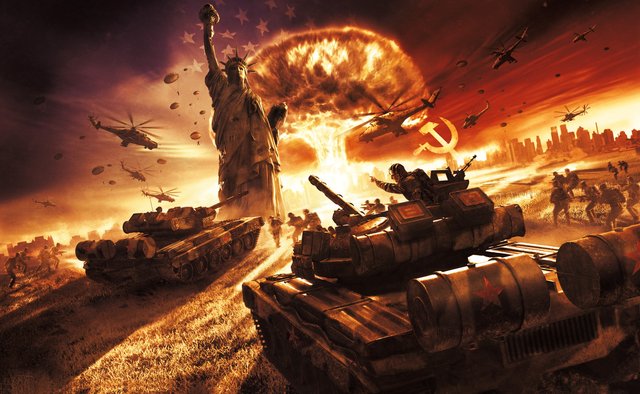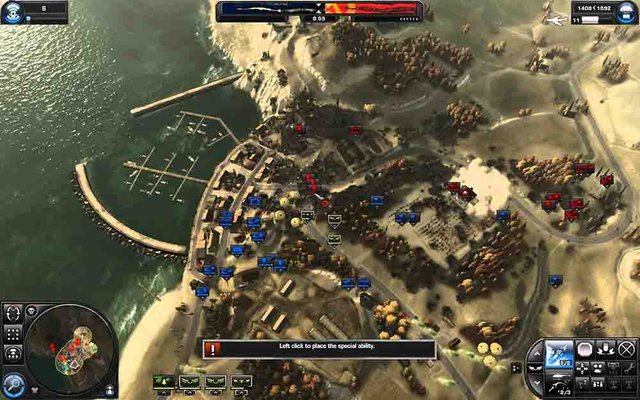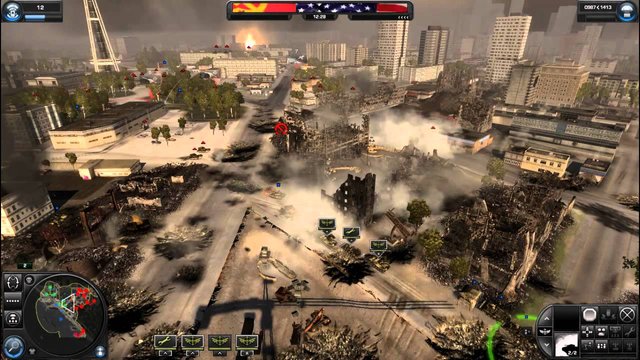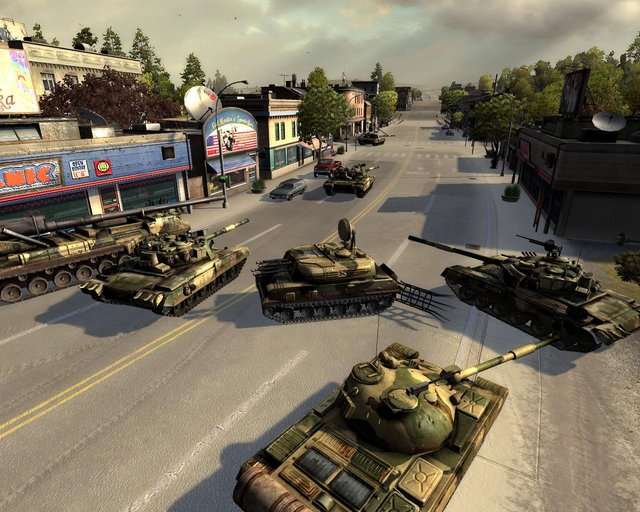My Gaming Graveyard: World in Conflict
World in Conflict was a game that had a massive influence over my life. It gave me a job (as a community manager), gave me insights into the competitive gaming community, and helped me land my eventual first paid employment in the gaming industry as a writer, which I did as a full time job for a while, many years ago.
World in Conflict was released in 2007. It is nearly ten years old, and sadly, the game is now dead. Well, it died a little while ago, when Massive Entertainment shut down the multiplayer servers, and Massgate the platform you used to play the game online.

Single Player Plot
It was a natural progression forward from Massive Entertainment's prior games, Ground Control. The game is in essence, about controlling ground, with an alternative history setting. In World in Conflict, the cold war goes hot, and its all out war between the USSR and the USA.
The USSR invade the coast of the US via shipping container ships, which contain lots and lots of military firepower. There's a story mode that explores the battle on several fronts, and you play from the US perspective in the single player. Later, an expansion was released, Soviet Assault, which let you battle it out from both sides of the fence.
The story is narrated by Alec Baldwin, and there's some nice moments there. Play it, if you must, but you'll be missing out on the real magic.
An early promotional trailer for the title.
Multiplayer Gameplay
World in Conflict is a real time tactics game. You don't build bases like in a RTS, you build your units, and move upon the enemy. There's a triangular based counter system. Air (Helicopters) Destroy Armor. Armor (tanks and heavy vehicles) Destroys Support. Support (anti-air and artillery) Destroys Air and infantry. Infantry destroys everything else pretty well, but is fragile. Played well, infantry is the most important class in a game of World in Conflict.
The most common game mode, domination, sees the two warring sides fight it out for strategic points on a map. You move into the area, capture it (by sitting still there) and slowly, fortify the area. Because each map has contested zones, and areas of conflict, there's always an exchange of power going on around the strategic points.

The combination of the simple rock-paper-scissors-jack of all trades but difficult to play combat system, combined with tactical aid, and the fact that you control one arm of the forces in battle means that there will be conflict, and that there's always the certainty of destruction.
There's a community driven version of the online multiplayer available, but there are rarely enough people online to have a proper game.
Technology
The technology at play in the game engine of World in Conflict was incredible for its time. Fully destructive environments, buildings, and even bridges (which could be destroyed for tactical advantage, or disadvantage to the enemy!) featured on every single map, and weren't just gimmicks. They enhanced game play mechanics.
Infantry giving you trouble because they're fortified up in the woods? No problem, say hello to some Napalm. No more forest. Tanks keep coming over that bridge? Laser Guided Bomb. Done. Pesky helicopters getting in your way? Order an air strike from some fighter jets to smash them to pieces (even though this wasn't super effective in the game).

World in Conflict was also one of the first games to Support Direct X 10. It didn't just have pretty particle effects and lighting engines, but also natively supported dual screen game play, with the gorgeous vistas of destruction supported on one monitor, with the tactical map available, in full screen, on the other.
There was also the ability to zoom all the way out and experience a grand-strategic view of the battlefield, or, if you'd prefer, zoom right in to the turret of a tank to see if you could sneak the turret out just far enough from the building so you could shoot, but not be shot at. Cover, and the destruction of the environments therefore made each game unique as stray shells and ordnance destroyed the very things you were fighting for defend as the battle raged around you.
Competitive Scene and Community
There were several ongoing tournaments in World in Conflict, with some prize money offered by the likes of Intel, and the publisher of the game when it was released (Sierra) The competitive scene died down when Acitivision did a major restructure and sold Massive Entertainment to Ubisoft.
I was blessed to be there from the beginning in the competitive World in Conflict scene, from the alphas, through to the beta-tests, and even ran a local gaming competition which had a prize pool of $5000 on offer.
The competitive scene in World in Conflict was full of personalities, and the game had built in ladders, clan battles, and ranking systems to let everyone know who was boss. The official format for multiplayer in the competitive scene was 5v5. One Air, Armor, Infantry, and Support player, with the final team member able to flex between these roles as required, or dictated by the best strategy for the map that was being played.
The Tactics

For instance, an amateur armor player may see helicopters approaching their tanks. They would instinctively use the tank's smoke grenades to conceal their position from the choppers. An experienced player would "chain smoke" their tanks, allowing the smoke from one tank to conceal many tanks, wait for this to expire, and then chain the next tank.
By the same token, an experienced air player could "attack ground", knowing the last position of the tank, still able to cause damage. So, tank players would adapt, and change direction inside the smoke. Another counter would be to use a scout chopper that could see through smoke, which ensured that tank players would always need a helping hand on their shoulder from support with anti air.
It was intricacies like this that made World in Conflict a delight to play, watch, and enjoy.
Conclusion
World in Conflict was the game that Company of Heroes tried so valiantly to be. It had action, replay-ability, and most importantly, instantly accessible multiplayer. The game sold poorly here in Australia, even though the reviews were favourable. It came out the same time as Crysis, which was likely a weakpoint as one of the game's big draw cards were big ticket graphics, just like Crysis.
The MOBA genre that has since spawned seems to perfect what World in Conflict started. 5v5, a variety of roles that are required to work together, with rewards granted for completing objectives. I don't think there will ever be another game like World in Conflict, as it was something that got better the more you understood. The more you played, the better you got, the more you learned. New strategies and metas were forming from the moment the game was released until the last patch was implemented.
It is with a reluctant sigh that a salute you, World in Conflict.
Thanks for reading!
Follow @holoz0r for posts that cover gaming, film, and a variety of other topics - I am a creative, and I share original content with Steemit!